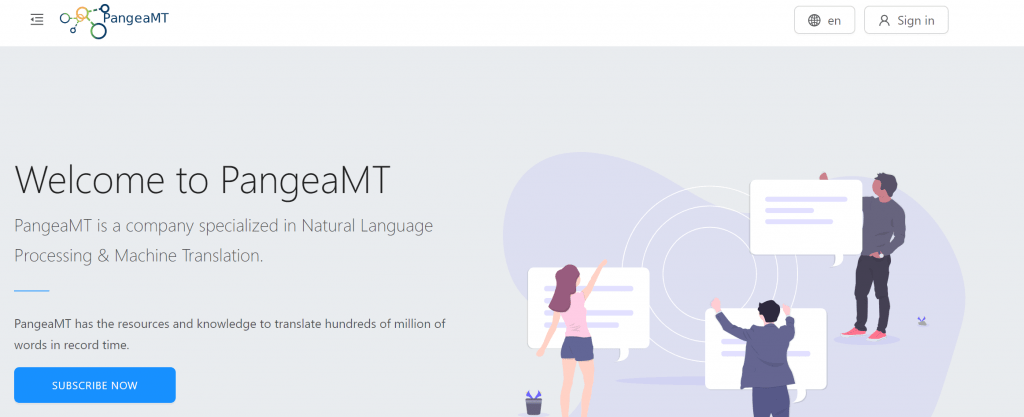Contact Pangeanic for professional German Translation Services. Our German translators are experts in the best computer-assisted translation tools and machine translation technology. Each German translator specialises in a different field: technical, marketing, legal, financial, pharma/medical, etc.
English to German translation services
At Pangeanic you can rely on a team that is professional and experienced in translation, revision and adaptation of texts in the format in which you need your German translation. Whether you need German for Germany, Austria, Switzerland, our team will offer accumulated decades of combined German translation projects. We have translated million of words from English, Spanish, French, Japanese into and out of German for companies and multinationals worldwide. Our experience in multilingual and major translation projects provides us with unique experience on which you can guarantee fast translation services.
Translation technology for German Translation Services
In terms of our terminology management and assisted translation, we use cutting-edge tools to create databases and ensure that you do not pay for the translation of the same sentence twice. Try our App, a full platform for document translation, machine translation API with your own engines, full machine learning, etc.


Rely on the practice of our internal staff and our selection of the best English-speaking, German and other languages’ linguists so that your publications are read in German as if they were a native version.
From a single file of MS Office(TM) to translate from English to German to processing other formats like InDesign files, FrameMaker, po formats, html, xlsx., odt, etc., Pangeanic will provide you with an efficient and economical solution for your translations.
ISO17100 Quality-Assured German Translation Services
We can promise Pangeanic’s German translations will be delivered to you in exactly the same format or the format you require. Working to same you time and with the help of powerful filters and translation technology, you will receive a ready-for-press, accurate German translation. You will not need to revise or check our German translation.
As a European Translation Standard certified company, Pangeanic offers full transparency and traceability in all its processes. We do not cut down on quality, we cut down on process times: it does not matter if you need only one or 100 German translation, you will always receive consistent, high quality German translations in each project.
German to English translation services
Only a professional translator selected and approved by Pangeanic whose native language is English and is fluent in German can perform German to English translations for Pangeanic. Most of our German to English translators live in an English-speaking country (US, UK, Canada, etc.,) and have studied German and spent a relevant amount of time in a German-speaking country. Our German to English translators only translate materials with which they have prior, demonstrable experience.
Features of German
German is the second most spoken Germanic language, after English. In Europe, it is the language with the most number of speakers (almost 100 millon speakers). Did you know that there are 3 million people that have German as their native language in Brazil, 800.000 German native speakers in Poland, and around half a million in Argentina, Chile, Canada and Russia?
German belongs to the Indoeuropean family, West Germanic languages group. Similarly, it is one of the world’s major languages; the vast majority of German native speakers is in the European Union, although there are German speakers in every corner of the planet. We recommend this Wikipedia article if you’re interested in this topic. The term used in English to refer to those speaking the German language is German-speaking.
Short history of the German language
Standard German, known as Hochdeutsch, did not originate from a particular dialect, as it usually happened with other languages throughout history. In this case it originated from several dialects of a written language. Since the 15th Century, this language allowed for the communication among people from different regions, but there was no unified pattern when talking. The formation of a standard pronunciation became necessary due to the increased importance of theatre in the 19th Century, which meant the directors of the theatre companies had to find a way to make sure the actors could recite it and it be understood throughout. That way the so-called Bühnendeutsch or “stage German” was borne. This would finally become the standard pronunciation of the German language, even if some of its precepts do not meet linguistic but acoustic requirements.
Are you looking for expert machine translation technology in German? Visit PangeaMT website to find out how to clean your data, build customised engines and own a private machine translation environment
